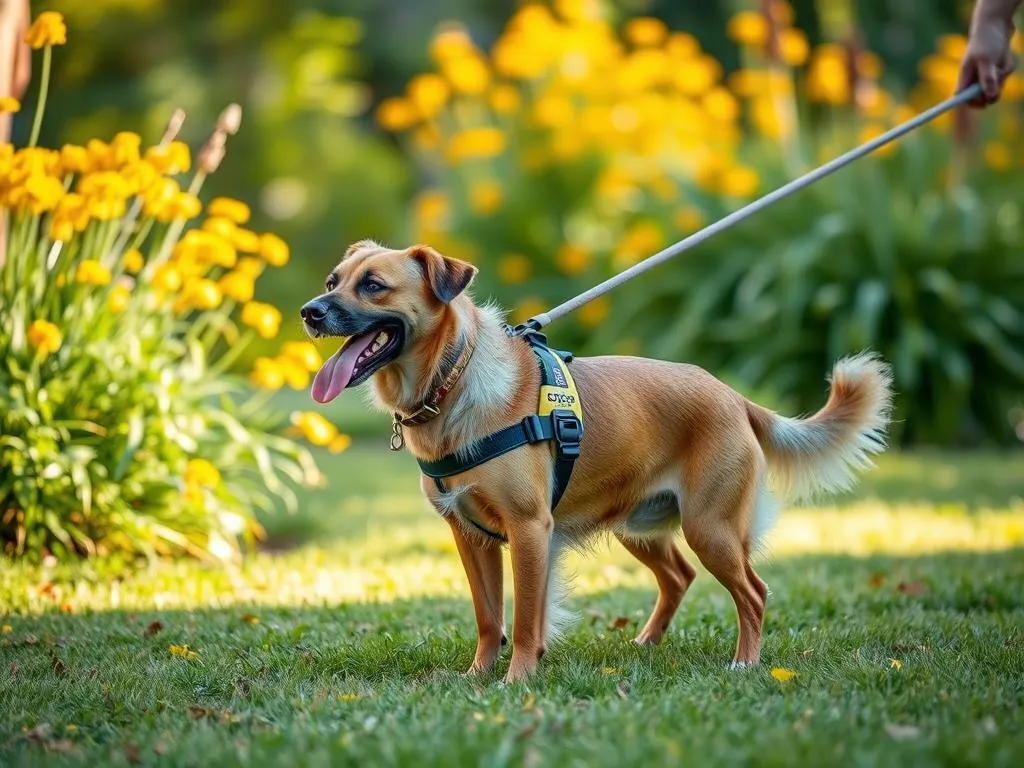
Introduction
Scooting is a common behavior exhibited by dogs, where they drag their hindquarters across the ground. This behavior can be quite distressing for pet owners to witness, and it often indicates an underlying issue that requires attention.
Common Causes
Understanding the reasons behind scooting is essential. Dogs may scoot due to various factors, including:
- Allergies: Environmental allergens can cause skin irritations.
- Anal Gland Issues: Impaction or infection can lead to discomfort.
- Parasites: Worms and other parasites can irritate the anal area.
- Skin Irritations: Rashes or infections can cause itching and discomfort.
Addressing scooting promptly is crucial for your dog’s health and comfort. Ignoring the issue may lead to more severe health problems. This article will explore effective home remedies for dog scooting and when it is necessary to consult a veterinarian.
Understanding Dog Scooting
What is Scooting?
Scooting refers to the action of a dog dragging its rear end across the floor or ground. This behavior can manifest in various ways, such as:
- A sudden movement where the dog drags its backside.
- Frequent attempts to adjust its position by rubbing against furniture or the floor.
Common Causes of Scooting
Anal Gland Issues
One of the primary reasons dogs scoot is due to anal gland issues. The anal glands can become impacted or infected, leading to discomfort. Dogs may instinctively try to relieve this discomfort by scooting.
Parasites
Parasites, such as tapeworms or intestinal worms, can irritate a dog’s anal area, causing them to scoot. Regular deworming and preventative treatments are essential for maintaining your dog’s health.
Skin Irritations and Allergies
Dogs can develop skin irritations or allergies that may lead to scooting. Common allergens include certain foods, pollen, or even contact with irritants like cleaning products. Identifying and removing these allergens is vital for your dog’s comfort.
Other Health Issues
In addition to the above, other conditions like arthritis, tumors, or infections may cause discomfort, prompting a dog to scoot. It’s important to monitor any accompanying symptoms, such as changes in behavior or appetite.
Home Remedies for Dog Scooting
Dietary Adjustments
Diet plays a significant role in your dog’s overall health and can help alleviate scooting issues.
Increase Fiber Intake
Increasing your dog’s fiber intake can promote healthy bowel movements, which may prevent scooting. Foods high in fiber, such as sweet potatoes or green beans, can help.
Hydration
Ensuring your dog stays well-hydrated is essential for digestive health. Fresh water should always be available, and you may consider adding water to dry food to encourage hydration.
Probiotics
Probiotics can enhance your dog’s digestive health by promoting the growth of beneficial bacteria in the gut. Consider adding a probiotic supplement to your dog’s diet, but consult with your vet first.
Natural Remedies
Several natural remedies can also help reduce scooting behavior.
Coconut Oil
Coconut oil is a versatile remedy that can benefit both the skin and digestion. You can add a small amount to your dog’s food to help soothe any irritation and improve digestive health. Its antimicrobial properties may also assist in preventing infections.
Pumpkin Puree
Pumpkin puree is an excellent addition to your dog’s diet. It is high in fiber, which helps with digestion and prevents constipation. A tablespoon or two mixed into your dog’s food can be very beneficial.
Apple Cider Vinegar
Apple cider vinegar can be a natural remedy for skin health and digestion. Dilute a small amount in water and use it as a rinse after bathing your dog, or add it to their food. It can help balance the pH of your dog’s skin and support digestive health.
Hygiene and Care
Maintaining proper hygiene is crucial for preventing scooting.
Regular Grooming
Regular grooming can help keep your dog clean, especially around the anal area. This is particularly important for long-haired breeds, as hair can trap debris and irritants.
Bathing
Bathing your dog appropriately can help reduce skin irritations. Use gentle, hypoallergenic shampoos and consider bathing your dog every few weeks, or as needed, to keep their skin and coat healthy.
Wiping After Elimination
Wiping your dog after they eliminate can prevent irritation. Use pet-safe wipes or a damp cloth to clean the area gently. This practice can help minimize the accumulation of irritants that may lead to scooting.
Behavioral Adjustments
Behavioral modifications can also help reduce scooting.
Monitoring and Training
Keeping a close eye on your dog’s behavior can help identify patterns that lead to scooting. Training your dog to eliminate in specific areas can also reduce the likelihood of irritants affecting their skin.
Exercise
Regular physical activity is essential for your dog’s overall health. Exercise helps maintain a healthy weight, which can reduce strain on the anal glands and decrease the risk of scooting.
Stress Reduction
Stress and anxiety can contribute to scooting behavior. Techniques such as creating a comfortable environment, providing interactive toys, or using calming aids can help reduce your dog’s anxiety.
When to Consult a Veterinarian
Signs that Require Veterinary Attention
While many cases of scooting can be managed at home, certain signs indicate that it’s time to consult a veterinarian.
Persistent Scooting
If your dog continues to scoot despite implementing home remedies, it may be necessary to seek professional help. Persistent scooting can indicate an underlying health issue that requires medical attention.
Blood or Discharge
If you notice blood or unusual discharge from your dog’s anal area, it’s crucial to consult a vet immediately. This could indicate a severe problem, such as an infection or tumor.
Change in Appetite or Behavior
Any sudden changes in your dog’s appetite or behavior should be taken seriously. If your dog seems lethargic or refuses to eat, it could signify a more serious health issue.
What to Expect at the Vet
When consulting a veterinarian about scooting, you can expect a thorough examination.
Possible Examinations
The vet may conduct a physical exam, including a check of the anal glands. They may also perform tests to rule out parasites or other underlying conditions.
Potential Treatments
Depending on the diagnosis, the vet may prescribe treatments such as medication for infections, dietary changes, or recommendations for further investigation.
Conclusion
In summary, managing your dog’s scooting behavior requires a comprehensive approach that includes home remedies for dog scooting. Key remedies include dietary adjustments, natural remedies, maintaining hygiene, and observing behavioral patterns.
It’s essential to monitor your dog’s health closely and consult a veterinarian if home remedies do not alleviate the scooting. Regular check-ups can also help ensure your furry friend remains in good health. By staying informed and proactive, you can help your dog live a comfortable and happy life.









